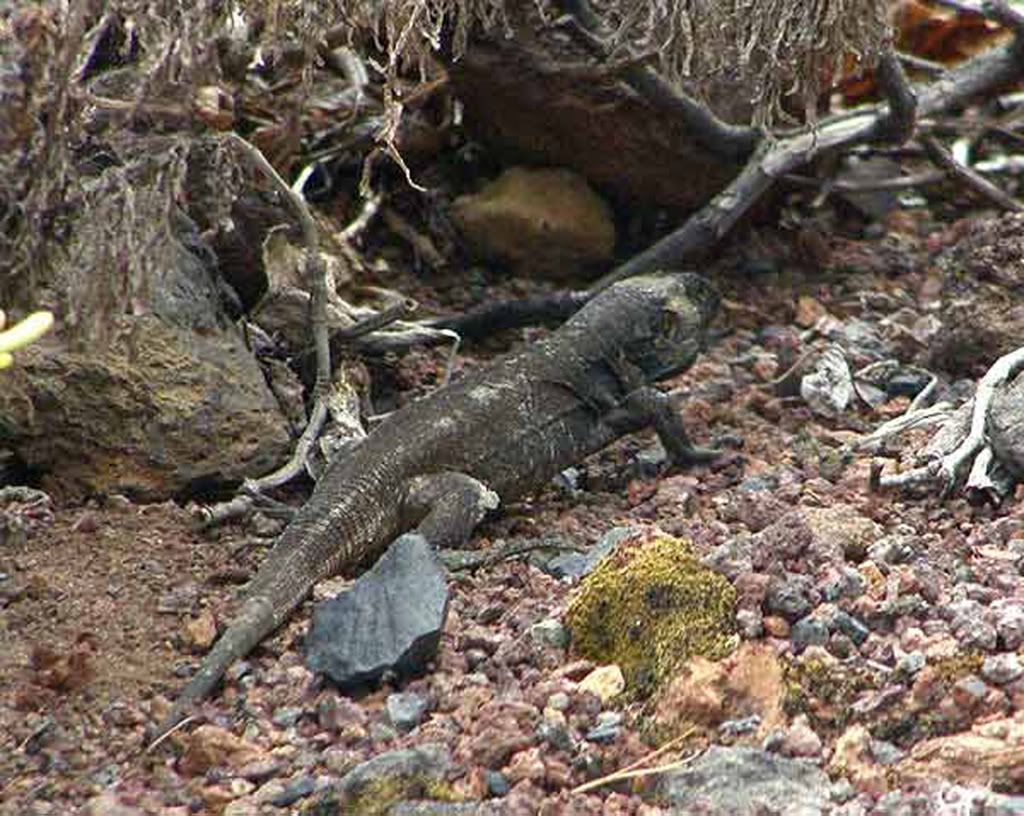Post by Melanie on May 4, 2006 3:57:17 GMT
Gallotia auaritae
Summary | Distribution | Other Documentation | References | Comprehensive
Taxonomy
Kingdom ANIMALIA
Phylum CHORDATA
Class REPTILIA
Order SQUAMATA
Family LACERTIDAE
Species Authority Mateo, García Márquez, López Jurado & Barahona, 2001
Synonym/s Gallotia simonyi ssp. auaritae Mateo, García Márquez, López Jurado and Barahona, 2001
Taxonomic Notes This taxon was originally described as a subspecies of Gallotia simonyi by Mateo et al. (2001), but we follow Afonso and Mateo (2003) in treating it as a full species.
Assessment Information
Red List Category & Criteria EX ver 3.1 (2001)
Year Assessed 2005
Assessor/s Miras, J.A.M.
Evaluator/s Stuart, S.N. & Cox, N. (Global Reptile Assessment)
Justification Listed as Extinct because it has not been recorded for around 500 years, and recent surveys have failed to locate any individuals.
Distribution
Country Names Spain [RE]
Summary Documentation
System Terrestrial
Major Habitat/s
(terms) 3.5 Shrubland - Subtropical/Tropical Dry
3.8 Mediterranean-type Shrubby Vegetation
6 Rocky Areas
Major Threat/s
(terms) 1.1.1.2 Habitat Loss/Degradation - Agriculture - Crops - Small-holder farming (past)
2.2 Invasive alien species (directly affecting the species) - Predators (past)
3.1.1 Harvesting (hunting/gathering) - Food - Subsistence use/local trade (past)
Conservation Action/s
(terms) 0 No conservation actions (in place, needed)
Detailed Documentation
Range This extinct species occurred from sea-level up to 800 m in the littoral zone of La Palma in the Canary Islands (Spain). Its decline started 2,000 years ago with the arrival of humans on La Palma. It appears to have become extinct in the last 500 years.
Population The species is believed to be extinct, though, like other giant lizards of the Canary Islands, there is a remote chance that it could be rediscovered in a remote or inaccessible location.
Habitat and Ecology It apparently occurred through the littoral zone of La Palma, and probably lived in xerophytic vegetation. It was presumably an egg-laying species.
Threats The main causes of extinction appear to have been introduced cats, consumption by people, and agriculture.
Conservation Measures Not applicable.
www.redlist.org/search/details.php?species=61501&tab=all
Summary | Distribution | Other Documentation | References | Comprehensive
Taxonomy
Kingdom ANIMALIA
Phylum CHORDATA
Class REPTILIA
Order SQUAMATA
Family LACERTIDAE
Species Authority Mateo, García Márquez, López Jurado & Barahona, 2001
Synonym/s Gallotia simonyi ssp. auaritae Mateo, García Márquez, López Jurado and Barahona, 2001
Taxonomic Notes This taxon was originally described as a subspecies of Gallotia simonyi by Mateo et al. (2001), but we follow Afonso and Mateo (2003) in treating it as a full species.
Assessment Information
Red List Category & Criteria EX ver 3.1 (2001)
Year Assessed 2005
Assessor/s Miras, J.A.M.
Evaluator/s Stuart, S.N. & Cox, N. (Global Reptile Assessment)
Justification Listed as Extinct because it has not been recorded for around 500 years, and recent surveys have failed to locate any individuals.
Distribution
Country Names Spain [RE]
Summary Documentation
System Terrestrial
Major Habitat/s
(terms) 3.5 Shrubland - Subtropical/Tropical Dry
3.8 Mediterranean-type Shrubby Vegetation
6 Rocky Areas
Major Threat/s
(terms) 1.1.1.2 Habitat Loss/Degradation - Agriculture - Crops - Small-holder farming (past)
2.2 Invasive alien species (directly affecting the species) - Predators (past)
3.1.1 Harvesting (hunting/gathering) - Food - Subsistence use/local trade (past)
Conservation Action/s
(terms) 0 No conservation actions (in place, needed)
Detailed Documentation
Range This extinct species occurred from sea-level up to 800 m in the littoral zone of La Palma in the Canary Islands (Spain). Its decline started 2,000 years ago with the arrival of humans on La Palma. It appears to have become extinct in the last 500 years.
Population The species is believed to be extinct, though, like other giant lizards of the Canary Islands, there is a remote chance that it could be rediscovered in a remote or inaccessible location.
Habitat and Ecology It apparently occurred through the littoral zone of La Palma, and probably lived in xerophytic vegetation. It was presumably an egg-laying species.
Threats The main causes of extinction appear to have been introduced cats, consumption by people, and agriculture.
Conservation Measures Not applicable.
www.redlist.org/search/details.php?species=61501&tab=all





